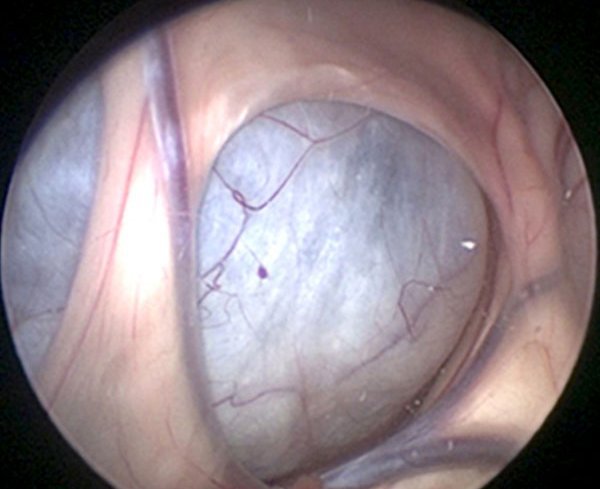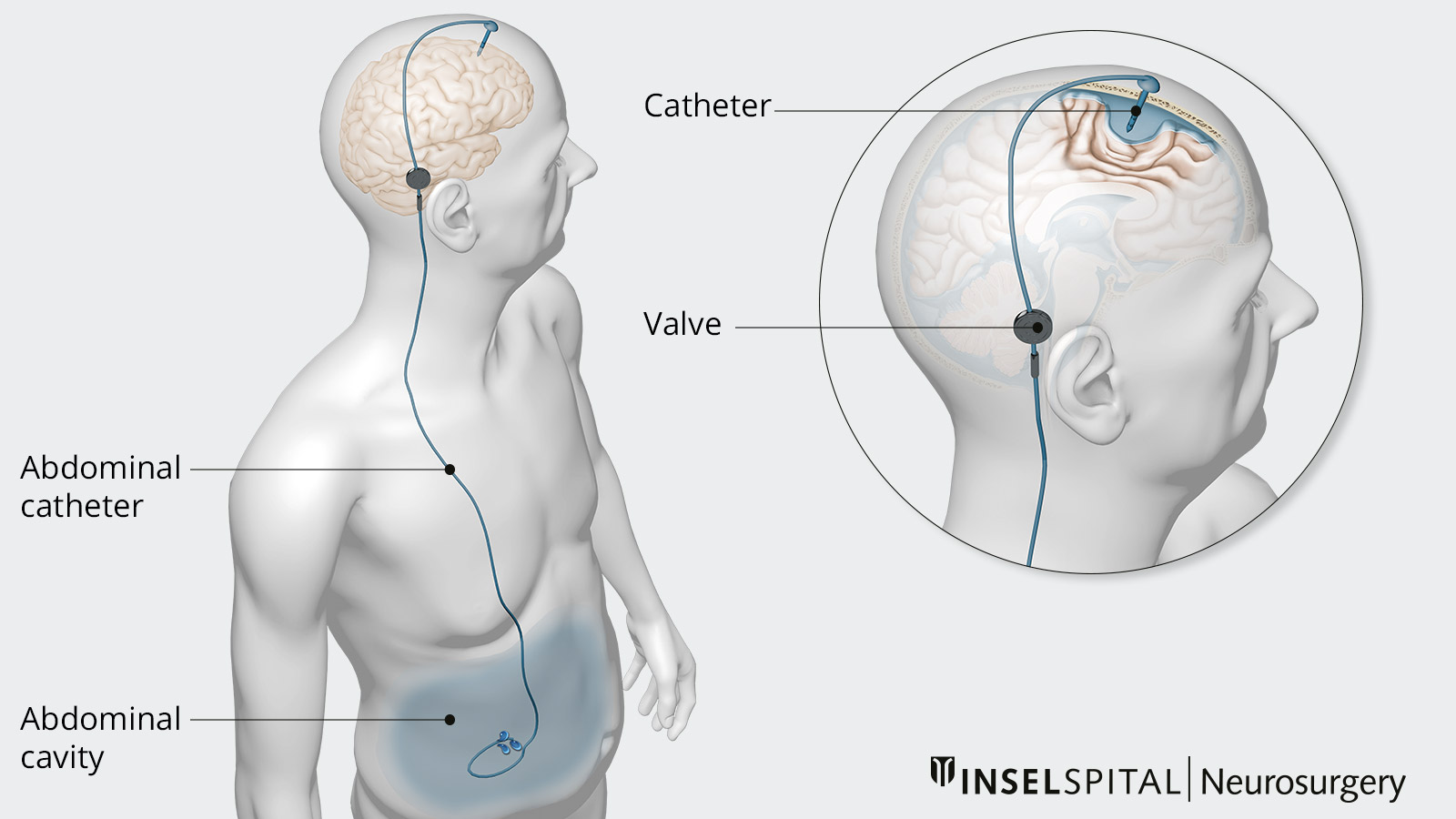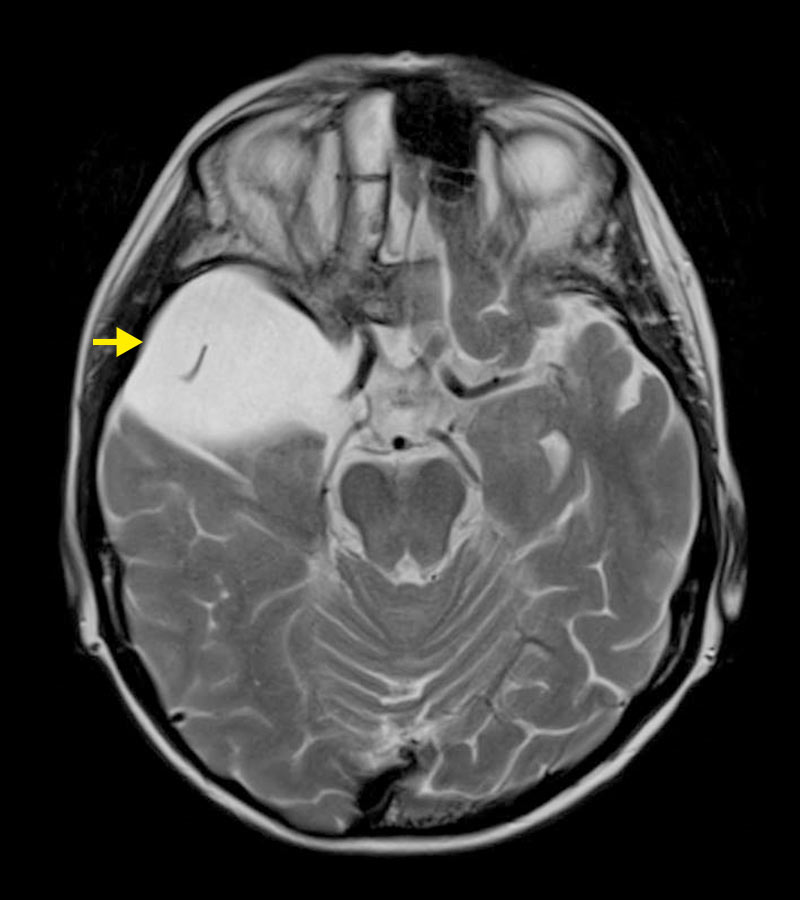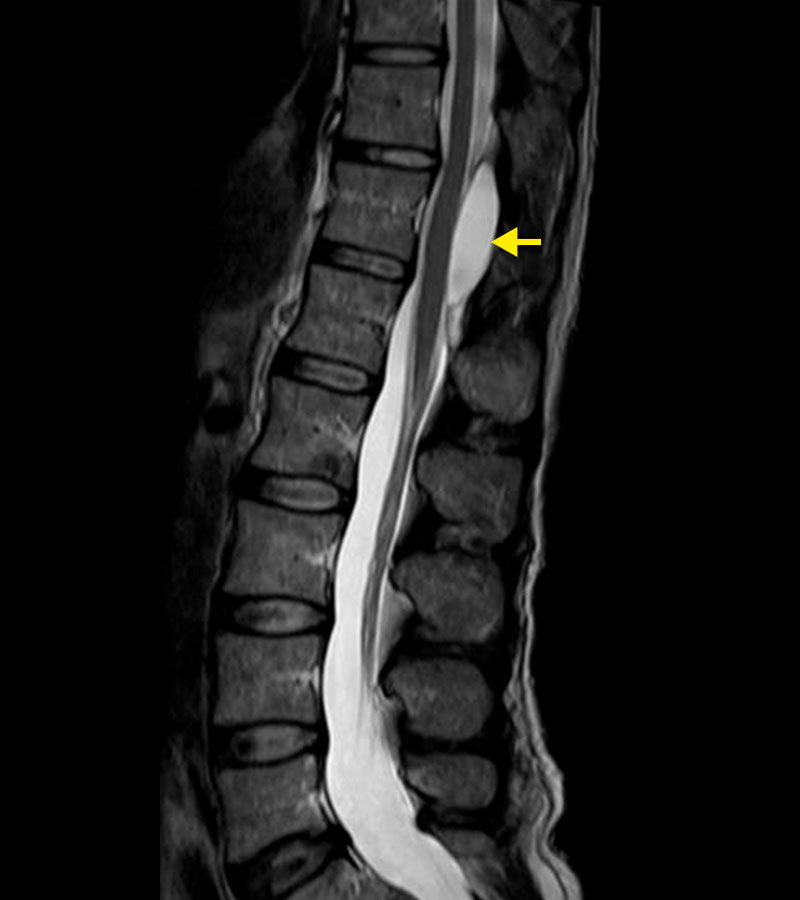Arachnoid cysts or leptomeningeal cysts are benign, usually congenital cysts in the brain or spinal cord that are filled with fluid. These cysts usually do not cause any symptoms and do not need to be treated. In rare cases, however, arachnoid cysts can exert pressure on neighboring structures and then cause symptoms.
What is an arachnoid cyst?
Arachnoid cysts are formed during embryonic development by a split in the arachnoid membrane, the middle of the three meninges. The resulting cavity is filled with fluid. An arachnoid cyst can be unicameral or multicameral and is usually not connected to the individual cerebral ventricles or to the space between the meninges and the brain, the subarachnoid space.
How common are arachnoid cysts?
- As part of autopsy studies, it has been found that 5 of every 1000 individuals examined exhibit an intracranial arachnoid cyst. They account for about 1% of all intracranial masses. Men are affected significantly more often than women, in a ratio of 4:1. Arachnoid cysts are predominantly located in the left hemisphere of the brain, but there are also bilateral arachnoid cysts, such as in Hurler syndrome.
- Spinal arachnoid cysts are located in the spine and account for approximately 1–3% of all lesions in the spinal canal.
Where do arachnoid cysts occur?
Arachnoid cysts occur at various sites in the central nervous system (CNS). A distinction is made between intracranial cysts in the skull and spinal cysts in the spinal column.
Intracranial arachnoid cysts
Nearly half of all arachnoid cysts in the brain are located in the middle cranial fossa, more specifically in the region of the Sylvian fissure, an extensive lateral groove separating the parietal from the temporal lobes.
Spinal arachnoid cysts
Spinal arachnoid cysts of the spine are most often located thoracically (in the thoracic cavity) and dorsally (toward the back). Spinal arachnoid cysts located outside the meninges may be associated with curvatures of the spine (kyphoscolioses) or other malformations of spinal cord anlagen (dysraphic syndromes). Arachnoid cysts within the meninges are either congenital or acquired – for instance, due to an injury or infection.
What symptoms may be caused by arachnoid cysts?
Most arachnoid cysts are asymptomatic and are discovered incidentally during examinations of the skull. If an arachnoid cyst causes symptoms, these can vary depending on the location of the cyst. In rare cases, the cysts may also rupture and hemorrhage.
Intracranial arachnoid cysts
Intracranial arachnoid cysts may cause the following symptoms:
- Headache
- Epileptic seizures
- Increased intracranial pressure accompanied by nausea and vomiting
- Hemiparesis symptomatology
- Visual impairment
- Hormonal disorders
- Increase in head circumference in infants
- Developmental delays in children or teenagers
Spinal arachnoid cysts
Spinal arachnoid cysts may cause the following symptoms:
- Radiating pain in arms or legs
- Symptoms of paralysis
- Sensory disturbances
- Difficulty walking
- Bladder and rectum dysfunction
How are arachnoid cysts diagnosed?
Magnetic resonance imaging (MRI) is the diagnostic procedure of choice. Imaging shows the cyst as a fluid-filled space. The cyst contents are typically isointense to the cerebrospinal fluid, so they have the same brightness on the MRI image. The cyst wall does not accumulate contrast material.
The Galassi classification divides arachnoid cysts in the middle fossa, the most common intracranial location, into three distinct types according to their size and space-occupying effect on MRI.
What is the treatment for arachnoid cysts?
Arachnoid cysts are only treated when they cause symptoms. Arachnoid cysts discovered incidentally should be followed up with MRI after 6 months to rule out an increase in size. However, children with arachnoid cysts should receive follow-up examinations until adulthood.
For symptomatic arachnoid cysts, surgical resection or fenestration (opening of the cyst wall) is the treatment of choice. Depending on the location of the cyst, the procedure is performed microsurgically or endoscopically. Another alternative is to place a cystoperitoneal shunt. In this case, a catheter is inserted into the cyst, which drains the fluid via a pressure valve under the skin to the abdominal cavity, where it is then absorbed.



The rate of complications of microsurgical and endoscopic surgical techniques is low. However, cyst formation or filling may recur if the cyst could not be completely removed or the fenestration closes again due to scarring. A possible complication after creation of a cystoperitoneal shunt is shunt dysfunction, e.g., due to a blocked catheter, valve malfunction, or infection.
Our experience at Inselspital
Our specialized neurosurgical team has many years of experience in the above-mentioned surgical techniques. Depending on the location and nature of the cyst, we always offer you the safest, most effective and minimally invasive surgical techniques.
-
Greenberg MS. Handbook of Neurosurgery. Thieme; 2016:1664.
-
Galassi E, Tognetti F, Gaist G, Fagioli L, Frank F, Frank G. CT scan and metrizamide CT cisternography in arachnoid cysts of the middle cranial fossa: classification and pathophysiological aspects. Surg Neurol. 1982;17:363-369.
-
Al-Holou WN, Terman S, Kilburg C, Garton HJ, Muraszko KM, Maher CO. Prevalence and natural history of arachnoid cysts in adults. J Neurosurg. 2013;118:222-231.
-
Hayes MJ, TerMaath SC, Crook TR, Killeffer JA. A Review on the Effectiveness of Surgical Intervention for Symptomatic Intracranial Arachnoid Cysts in Adults. World Neurosurg. 2019;123:e259-e272.
-
Fam MD, Woodroffe RW, Helland L et al. Spinal arachnoid cysts in adults: diagnosis and management. A single-center experience. J Neurosurg Spine. 2018;29:711-719.
-
Eroglu U, Bozkurt M, Kahilogullari G et al. Surgical Management of Spinal Arachnoid Cysts in Adults. World Neurosurg. 2019;122:e1146-e1152.


